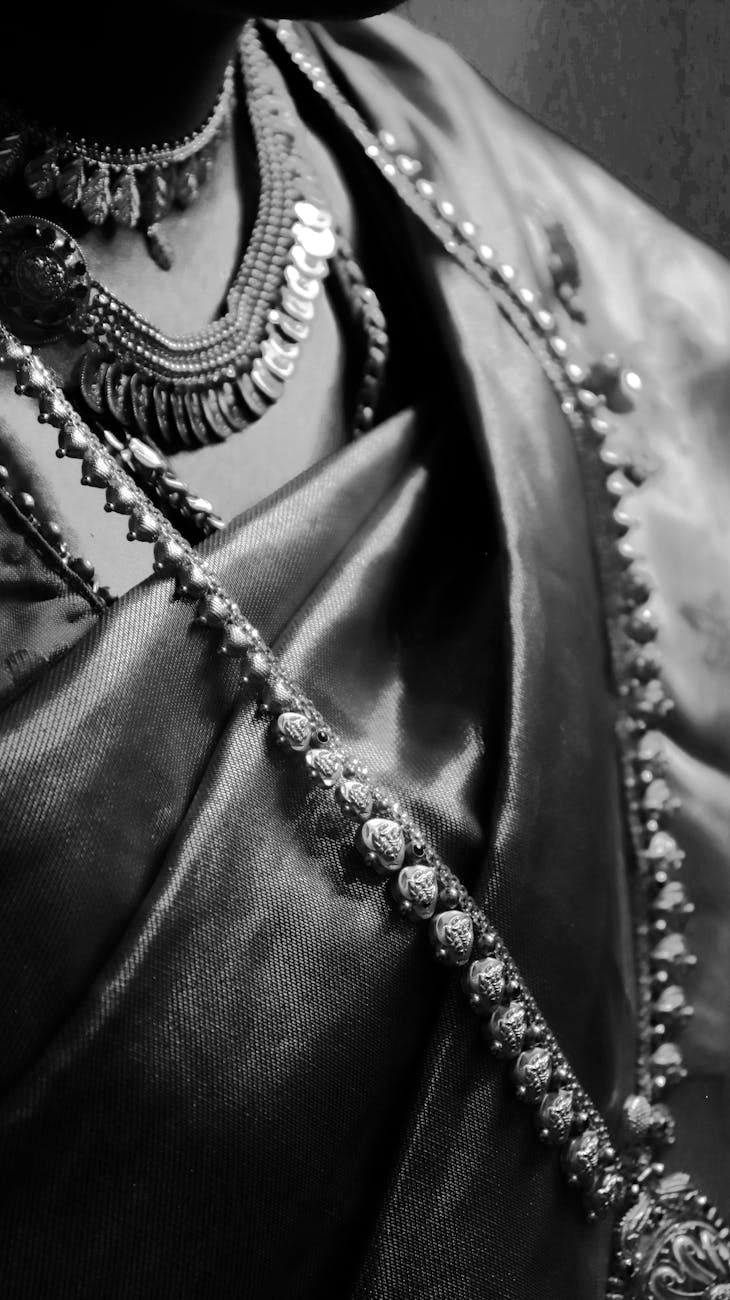In Hindu wedding customs, Mangalsutra is a bright thread that symbolizes the bond between husband and wife. It originates from the words Mangal, Sanskrit word for auspicious, and ‘sutra’, meaning string, form the etymology of the Mangalsutra, also symbolizing the unification of two souls in a sacred marriage.
The custom of wearing a Mangalsutra is not just another century-old tradition, but it embodies the culture which has deep roots of Hindu beliefs and rituals. Originally common in the Southern states the spread of this fashion in the North led to its changing in drawing and pattern, but gold, signalling purity and wealth, remained paramount to the design.
At the pinnacle of the rite of marriage, the holy thread decorated with auspicious symbols is tied by the groom on the neck of the bride underscoring the sanctity and the lasting character of their togetherness.
Essentially twice strung with black beads and pendant, keeps its significance beyond the ornamentation. The two black strings represent the divine powers distinguishing Shakti and Shiva which in return symbolize power, security and harmony in the marital relationship.
Soaked in the culture, the Mangalsutra is believed to bring good luck to the couple, driving away all the evil forces and bringing in the affluence and happiness in their married life.
It is also not just a religious symbol, but a physical mark of marital commitment and social approval as well. Mangalsutra along with the Sindoor has become synonymous with married women and is worn with reverence and pride. It signifies a woman’s marital status and her allegiance with her husband and family, as one of the prominent matrimonial rituals of the Hindus.
While being inherently traditional, the Mangalsutra also plays the role of something psychological and societal today. It is made from noble metals such as gold, which gives it the look of eternity and at the same time, does offer some physiological benefits. Gold has a number of healing properties, the most being improved heart health. Ayurveda reveals that wearing a Mangalsutra close to your heart attracts cosmic waves from surroundings and aids heart functioning. Hardened black beads, charged with both durability and defence, are well aligned with our time, suggesting protection even in the event of the things not going as expected.
The Mangalsutra, psychologically, becomes a point of assurance and identity for a woman, enhancing the overall emotional stability of her marriage and a sense of belongingness in her married state. Socially, it serves as a means of solidifying social status within the town, as well as bolster community ties.
In the present, Mangalsutra’s wearing is not necessary, while many modern brides choose their designs that reflect own style and convenience. Whether it is bold designs, or simple creations, the Mangalsutra is flexible, and symbolize the societies’ change and the individual personalities.
Interestingly, many traditional aspects of the Mangalsutra might have changed, yet, the meaning behind it all stays the same—a lifelong symbol of commitment, balance, and harmony among the society. Although it may not be a magic wand that produces a happy marriage, it goes beyond being just an adornment, as it is capable of personifying love, faithfulness, and being together forever. With their Mangalsutras, women walking the path of marriage represent Shakti, i.e. their strength and their resilience and they also illustrate the capacity of devotion not just as a family but as an entire community.
The Mangalsutra is not just physical jewellery, but emotional jewellery; the intimate and universal symbol of the commitment and love between husband and wife. This declaration in the wedding ceremony is usually when the groom proclaims it and makes it as valuable as his wife’s whole matrimonial life.Consequently, the Mangalsutra is the most important symbol of the marriage of the Hindu religion, therefore meaning the salvation relationship between partners.

